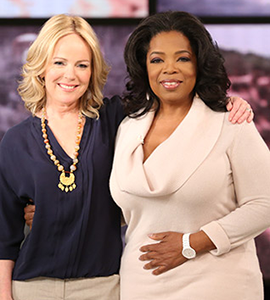On All Our Past Selves
I’m writing this from a hotel room in Chicago. My room service cappuccino (is there’s anything nicer than a room service cappuccino ?) is by my side. The Do Not Disturb sign hangs on the door. I have several hours of peace and quiet before my event this afternoon. Hourglass was published exactly two months ago, and I have been traveling around the country to give readings and talks ever since. I’m down to the last weeks now — next up, Minneapolis, Denver, Aspen — and as the official tour comes to an end, I’m filled with conflicted feelings. These last couple of months have been a blast. I’ve met amazing readers, seen dear friends in far-flung cities, learned how to pack an overnight bag as efficiently as George Clooney in Up in the Air. The pace has been intense. I’ve been a literary road warrior, moving through airport terminals determinedly, but also softly, as a dear yoga teacher friend advised. I’ve had some extraordinary surprises along the way: the biggest of these was my therapist from when I was in my early twenties — during a terribly difficult stretch of years — in line at a book signing in Connecticut. Let’s have coffee, I said to her. I’d love to catch up. What does it even mean to catch up on three decades? High school friends, college friends, even friends from my childhood neighborhood have made the effort to come see me, and the effect of all of it is not unlike the effect I was hoping to convey in Hourglass itself.
Time. In my book, I quote Grace Paley as saying that from ages fifty to eighty, it’s not minutes, it’s seconds. I’m near the start of that stretch of years and it already feels true. But time doesn’t only zoom forward. It also loops around. It collapses. It reverses itself, in our minds, our memories, as if the years see-saw back and forth, back and forth. Our younger selves are always with us. The ones we think we’ve put to rest — they cannot be put to rest. Nor should they be. They remain alive, and, as Didion once wrote, they knock on our mind’s door at the most inconvenient times. So much of writing Hourglass was my way of exploring this sense that my younger selves are all still within me. I’d like to tell my twenty-year-old self a thing or two. I’d like to give her a hug. But of course I can’t. All I can do is hope that in some other dimension she can see herself, grown up, a wife, a mother, a writer, a teacher, a friend. My editor, when she acquired Hourglass, told me she felt it was like a companion to my first memoir, Slow Motion. The girl reaches out to the woman. Here I am! And the woman calls back to the girl. I see you!

I’ve come to believe that we all — each and every one of us — has a certain, central, task of the psyche to perform while we’re here, alive on this earth. After all, it’s so unlikely to be here at all, born into this human body, on this grid, this place, this moment in time. Mine, I’ve come to think, is to become whole. To integrate a lifetime of complexity, challenges, secrets, luck, privilege, the inheritance of pain, of misunderstanding, the recompense of all the gifts I have been given with which to explore. I am a digger. I gnaw. I hope to come to know my own bone.
And so I sit in my quiet, solitary hotel room high above Chicago. My room service cappuccino has grown cold. I need to get dressed now, fix my hair, slap on some makeup, and head over to my event. As I move (deliberately, softly) through this city I hope I can keep all my past selves and perhaps even my future selves with me, on time’s crazy continuum. I need the whole unruly crowd.


















